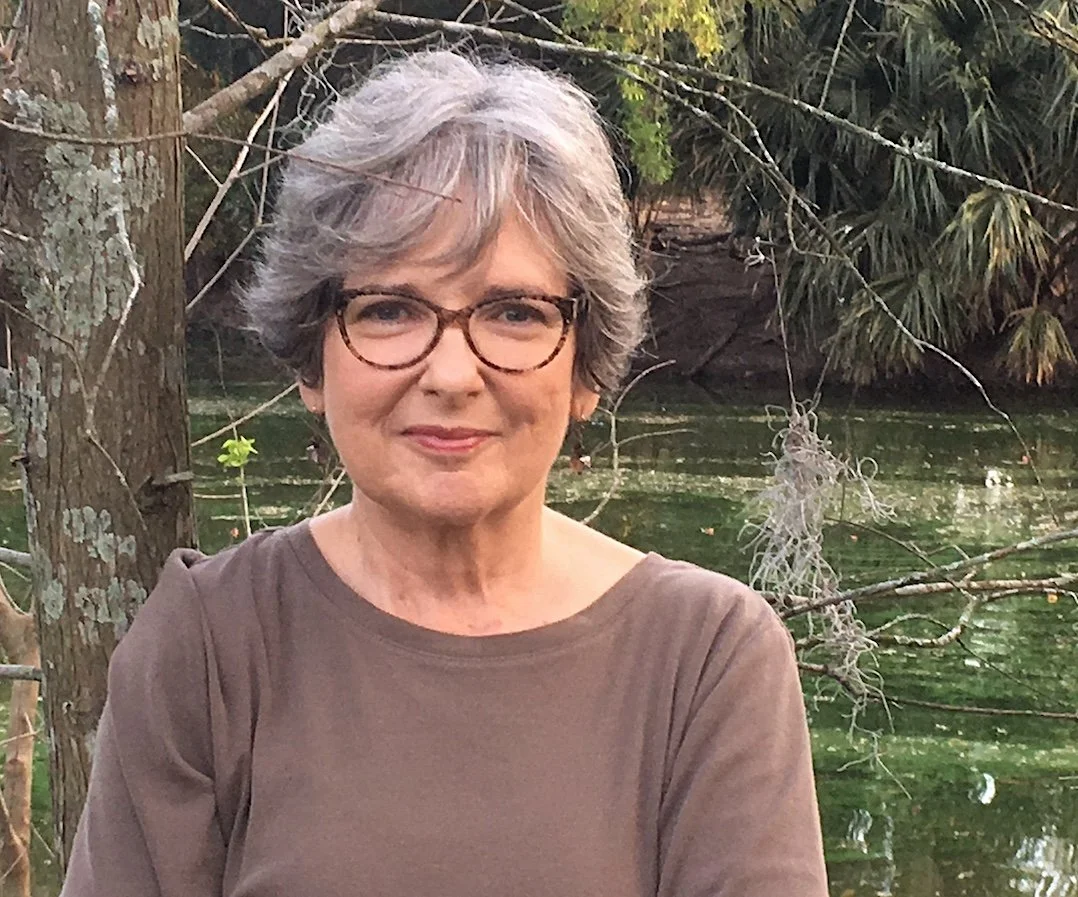Interview with artist Adrian Deckbar
Adrian Deckbar is a painter with studios in Leslie, Arkansas and New Orleans, Louisiana. She holds a BA in painting from University of Louisiana at Lafayette, an MA in painting from San Francisco State University, and an MFA in painting from Tulane University. Adrian has served on the faculty of Tulane University and the New Orleans Academy of Fine Arts and conducts workshops throughout the region. Her extraordinary paintings explore the boundaries between photorealism and abstraction and are in many prestigious museum, private, and corporate collections. More of Adrian’s work can be found at Justus Fine Art Gallery in Hot Springs and at her website adriandeckbar.com.


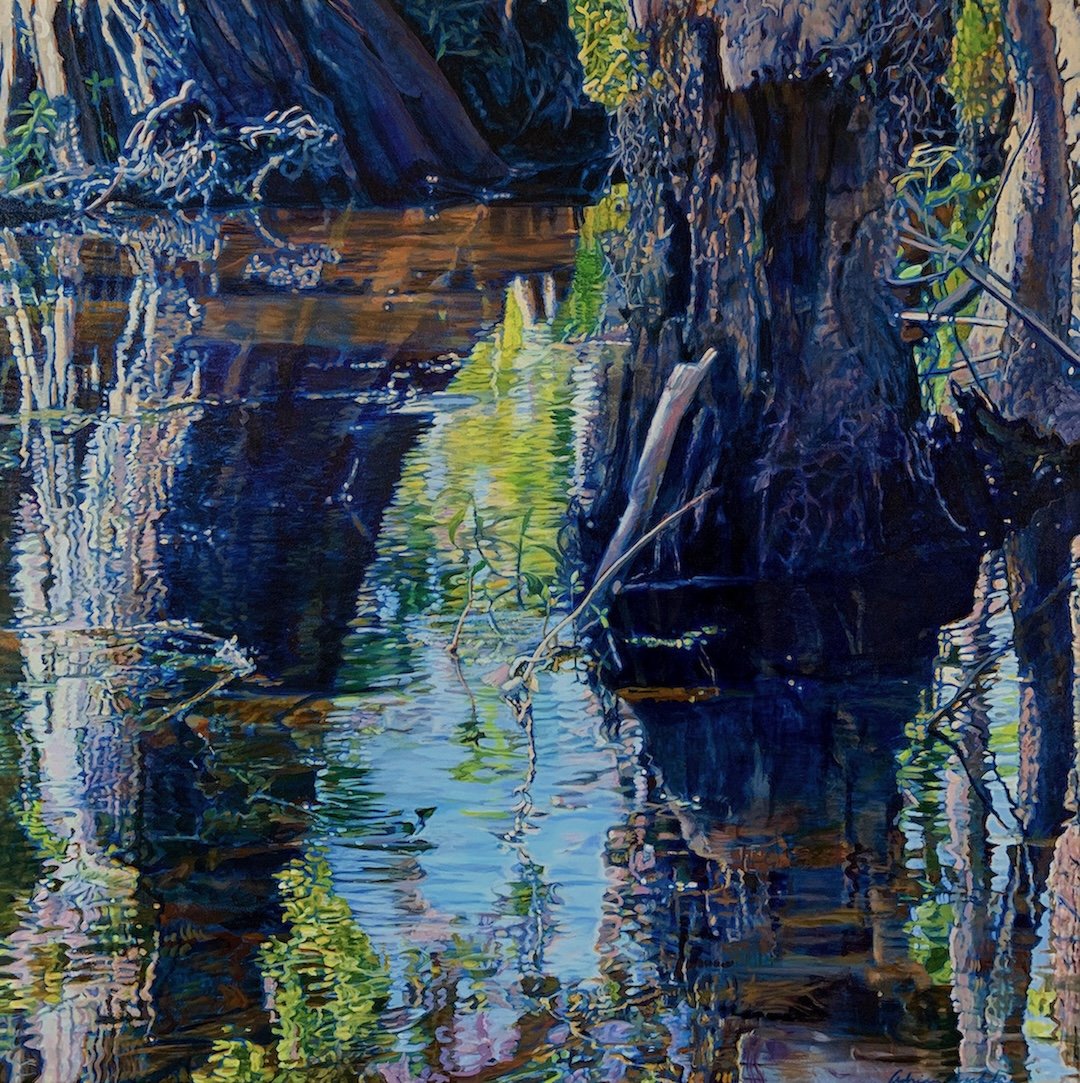
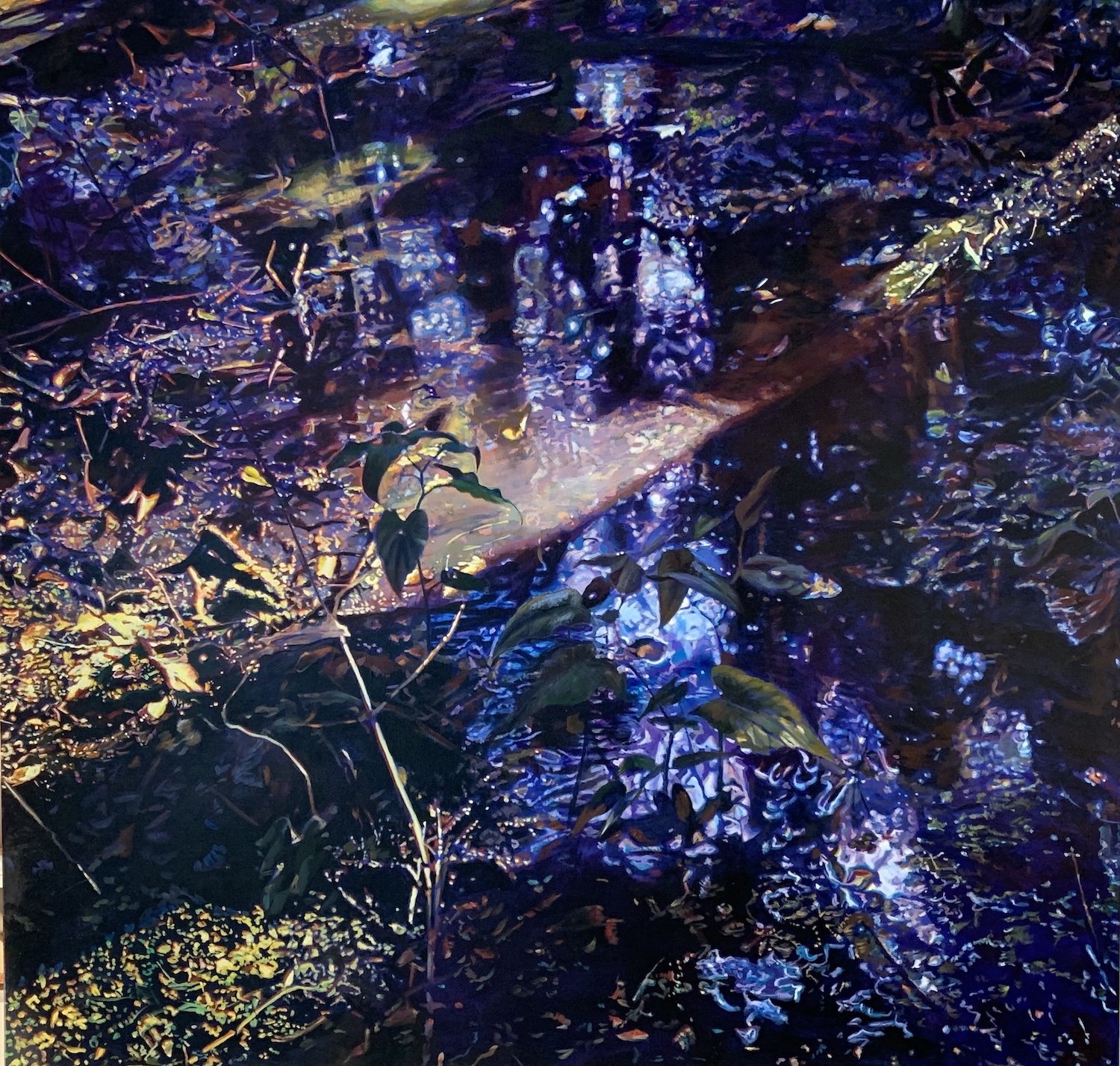

AAS: Adrian, I know you are originally from South Louisiana like I am. What brought you to Arkansas?
AD: I grew up in New Orleans and was interested in art from an early age. I drew things around me, and soon became skilled. Then my older sister, who studied at McCrady's Art School, showed me her art books at around age 9, particularly Michelangelo's Sistine Chapel, and I was smitten. Dian also taught me how to paint a bowl of grapes from life in oil, and my family and teachers encouraged my drawing. At the same time, I was enjoying art classes with our Russian high school teacher who taught us much more than the basics. I started playing violin daily with the school orchestra and performed the Bach Concerto for Two Violins at age 14 in concert.
I began college at what was then USL in Lafayette with a scholarship in music. I was simultaneously taking art classes and knew, within a couple of months, that the freedom of expression that the art department fostered was what I wanted. Changing my major to Fine Art I graduated in 1973 with a BA in Painting and Drawing. I was criticized because I used photography as the basis for my work, enduring much criticism. Then I found photorealism on the cover of Artforum and brought the issue to my critics. This changed everything for me and validated my direction. Rather than discouraging me from using the photo reference for painting, I became more enamored of it, and decided to pursue this direction for my master’s studies.
In 1974 I moved to San Francisco where using the photo reference was not only expected, the professors actually explained and demonstrated how to: use the photo and read it, see the values and paint halations, deal with edges, and how to see depth. How to make the photo work for you. My advisor was Robert Bechtle, one of the most respected photorealist painters in the world. My work, by the end of the program, had the glistening polished look I have acquired and retained and still push into new areas.
I got my MA there in 1977 and planned to stay and live on the West Coast, but because of my mother's sudden death, I was asked to move back to New Orleans to help my father in 1978. After a very bad year, I went back to school at Tulane for an MFA which I received in 1981. I developed the "Kidnap!" series and showed them at the Arthur Roger Gallery. No coincidence...posing my friends to act out a version of the Patty Hearst kidnapping, only realizing later it had been me who had been 'kidnapped'.
The following year, my now husband, Mike Smith, asked me "Do you like the woods?" and took me up to Arkansas. After a week of camping out, I became enthralled by the Ozarks. Over the next few years, we would stay in a small cabin that he built and spend every holiday we could there. We started with 4 acres, and eventually came to own around 63. His friends from high school had wanted to be part of the "back to the land movement", and we eventually bought one of them out, near Leslie with gorgeous bluffs and drop offs with views and beauty, unlike anything I'd ever experienced. In 1994, we got married in Mountain View. By 2005 we wanted a real home here, so we built a house on our property right before hurricane Katrina hit New Orleans, where we lived since the city was closed down. But it became apparent that we were cramped and needed space to work since my husband is also an artist. So, the following year, we built a big studio, which is about 1000 ft.² with 10-foot ceilings, decks and a view. Since 2007 this has been my primary studio and I come here whenever I can. I love it! The contrasts are what I enjoy most: wet and swampy versus high and dry, jazzy with alcohol flowing freely and open all night vs. dry counties and all that that implies, rocky with mountainous views vs. antebellum architecture... and 4 seasons! Plus, all the other things that are so completely different about the two cultures. I still use my New Orleans studio, but prefer my Leslie studio, and spend more and more time each year here.
AAS: Who were some of the artists that you were interested in growing up?
AD: Early on, I was interested in Michelangelo's mastery of the human form, Caravaggio's drama and lighting, and Vermeer's use of the camera obscura and mastery of depicting the most effective sense of light and mystery with the fewest strokes of paint. I later became enamored of the drama and tension of Francis Bacon, the grace of Degas, Chuck Close's skill using the photo reference, and Cindy Sherman's incredible self-portraits. Albert Bierstadt and the American landscape painters affected me as well.
AAS: I would describe your more recent work as photorealist abstractions of nature, which is somewhat of an oxymoron but isn’t that sort of what your pictures are.
AD: My early work was figurative, working with friends and models that I hired and posed, setting up lighting, acting out visual ideas. I photographed these sessions and used the images to paint from, creating implied narratives. Always using strong, oblique light to create drama and cast shadows, I wanted to get the effect of mystery or lurking danger...something left unsaid.
In 2003 I decided to completely reverse course and go out and capture images with my camera. I was looking for drama in nature and the shimmering effects of light. I was soon drawn to water...seeing reflections, depth, small objects floating on top, usually leaves …seeing through and into the water, more mystery.
Always cropping tight and getting the most punch I could out of the composition, I found that the thing that tied these subjects together was my interest in light and dark, contrast and chiaroscuro. The more I worked with water-based nature, the more I became interested in abstracting the composition. The landscape imagery freed me from using the exacting photorealism that I felt compelled to employ with figures.
AAS: I think Nature’s Stained Glass is a good example of what I meant. I really love the effect you achieved of shimmering water.
Nature’s Stained Glass, 36” x 36”, acrylic on canvas
AD: Nature's Stained Glass was painted a little over a year ago and reinforced my interest in slightly abstracted water based imagery. I enjoy using paint to bring the layers, mystery and depth to the viewer.
I work on both the figurative pieces and abstracted landscapes, because they inform one another: when I hit a wall with one subject, I can go to the other and find an insight, a fluid methodology. Each subject requires different aesthetics and techniques. I also go back-and-forth from oil to acrylic for the very same reasons. Sometimes I prefer the immediacy of acrylic, and at others I like the slower drying medium of oil where I can more easily blend the transitions.
AAD: Flowing: In and Out is certainly one of my favorites. Do your images always have reference photos or are they sometimes totally from your imagination?
Flowing: In and Out, 48” x 36”, acrylic on canvas
AD: I just finished Flowing: In and Out a couple of days before I connected with you. I am very excited about it because it is painted from a photo taken at a creek about three miles from my place here. It appeals to me because I love the rock formations in the Ozarks, and I now have water and rocks surrounded by and immersed in water, combining my interests. I have a number of photos ready to go and just need to decide what size canvases to use. I always work from photographs that I take and compose. At the end of a painting, I put the photograph down and use my own color sense to accentuate and articulate what interests me. But I really enjoy working from the photo, finding and transposing the intricate nuances that the camera so easily conveys.
AAS: Swamp Moss really shows off your technical skills. I think it is an astonishing work. Tell me about it and why you chose to use pastel.
Swamp Moss, 24” x 34”, pastel on paper
AD: Swamp Moss was one of the first images I created when I discovered my interest in working with nature. Many of my photographs were taken in the swamps around New Orleans, and I found this image in a serene setting just as the sun was setting. One challenge I made for myself was to try to make beautiful images during my favorite time, the golden hour...just before sunset, and to paint landscapes that weren't ordinary. My husband decided to join me on some of these photo hunts because he had taken many incredible nature photographs as well, and I know that influenced me. He also very often knew of special places to go just outside the city. He is a professional photographer and has a great eye. Only rarely would I borrow and use one of his photographs because I feel that a major part of my creative process is the capture of the image. When I saw the delicacy of this photo, I knew it could only be translated in pastel. While I was teaching classes at Tulane University in the art department, a colleague was writing a book on Degas and offering a class which I sat in on. It spurred my interest in pastel even further.
AAS: In several of your paintings, like Forest Floor, you use oil over acrylic. Tell me about that painting and the technique you used and what effects it produces.
Forest Floor, 48” x 60”, oil over acrylic on canvas
AD: When I first began to work with nature as my subject, I simultaneously developed an allergy to turpentine. I had been working in oils since I began graduate school in San Francisco in 1975, after learning to paint in acrylic in undergrad school. I became so ill that I wound up incapacitated. This was a real challenge, and I tried every solution I could find: other thinners, water-based oils, and numerous other methods. I finally came up with underpainting in acrylic and finishing in oil paint. This gave me the freedom to work in very large compositions and lay everything out with thinned out water-based paint. It was the evaporative solvents that were the problem, and I found a substitute with thinned out acrylics. This worked well. I could overpaint with oils to get the blending and chiaroscuro that only oil paint could give me.
AAD: I want to ask you about your figurative work. Disconnected makes me think of an old movie poster – maybe because of the phone. Was it painted for a particular purpose, or did you just want to challenge yourself?
Disconnected, 42” x 26”, oil on canvas
AD: I painted Disconnected because I wanted to work with white and see all of the colors reflected in the forms and shapes. I also had a fantastic model, and felt her expression and attitude conveyed exactly what I wanted to bring out in this image. The photo was taken in 1988, when those kinds of phones were still being used, but I painted this painting in the early 2000s. Annabelle had the detached expression I sought to find in all my models, and I created more than 30 pieces with her as the subject.
AAD: I can tell that capturing the play of light is important to you and must be fun to do. Tell me about Daydreamer. In this remarkable painting, and light plays an even more prominent role.
Daydreamer, 36” x 24”, oil on canvas
AD: Daydreamer as well as nearly everything I've ever created, is about light and dark, contrast, chiaroscuro, drama, cast shadows. The model here is a former student of mine, a sculptor, a fantastic draughtsman and now a professional artist.
I had always felt that as a contemporary realist painter I had to separate my work into categories. Probably since I was accepted to grad school on probation because my work followed so many different styles and subjects. It is only in the last few years that I realized that it is my viewpoint that connects my work – dramatic, strongly lit, tightly cropped images that I either find in nature or set up with models. That is what compels me. When I get back to the studio and look at my photos, I am careful to choose an image that already seems like a painting – I can actually see the painting when I look at the photo. My job is just to bring it out onto the canvas.
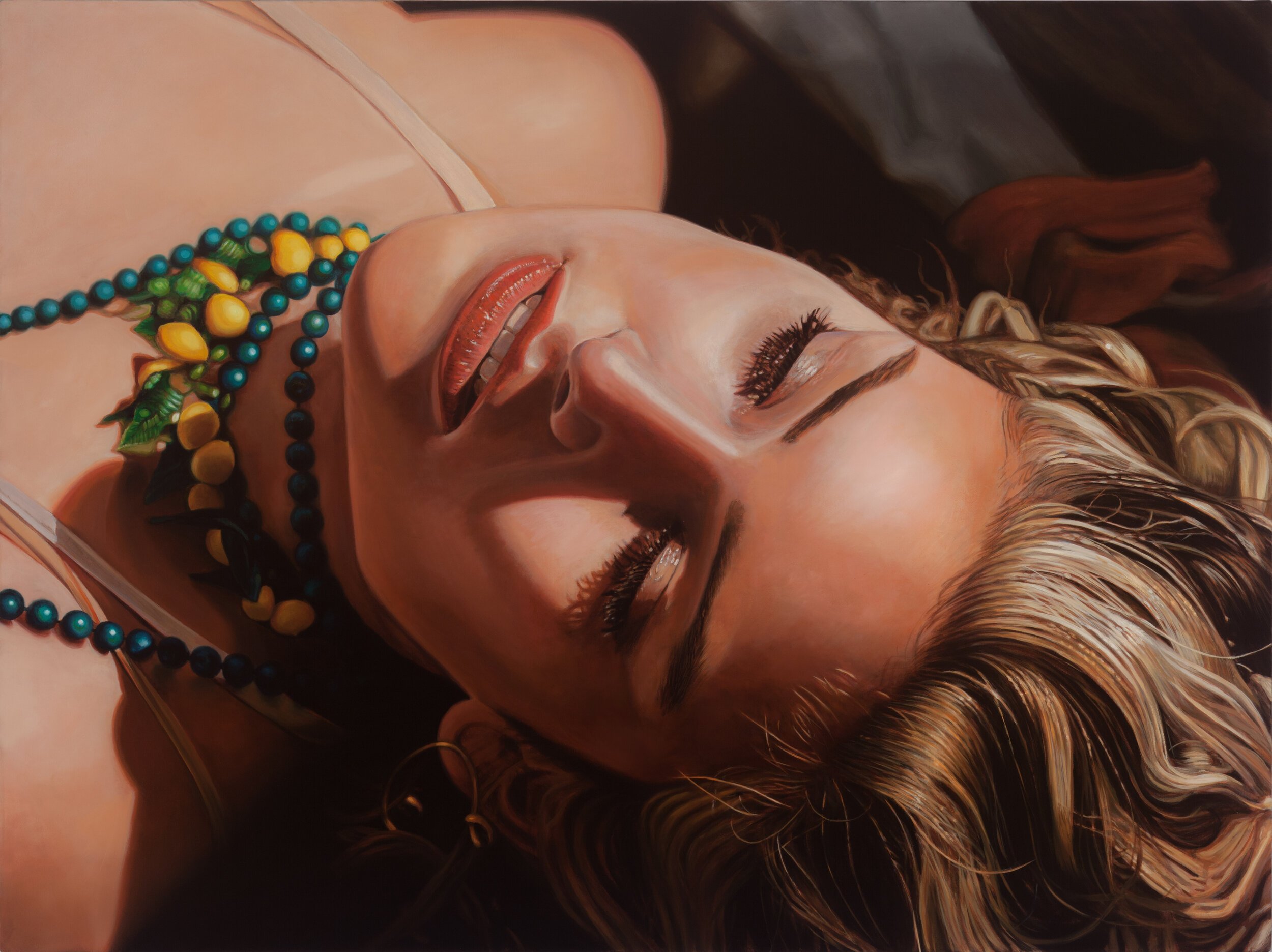
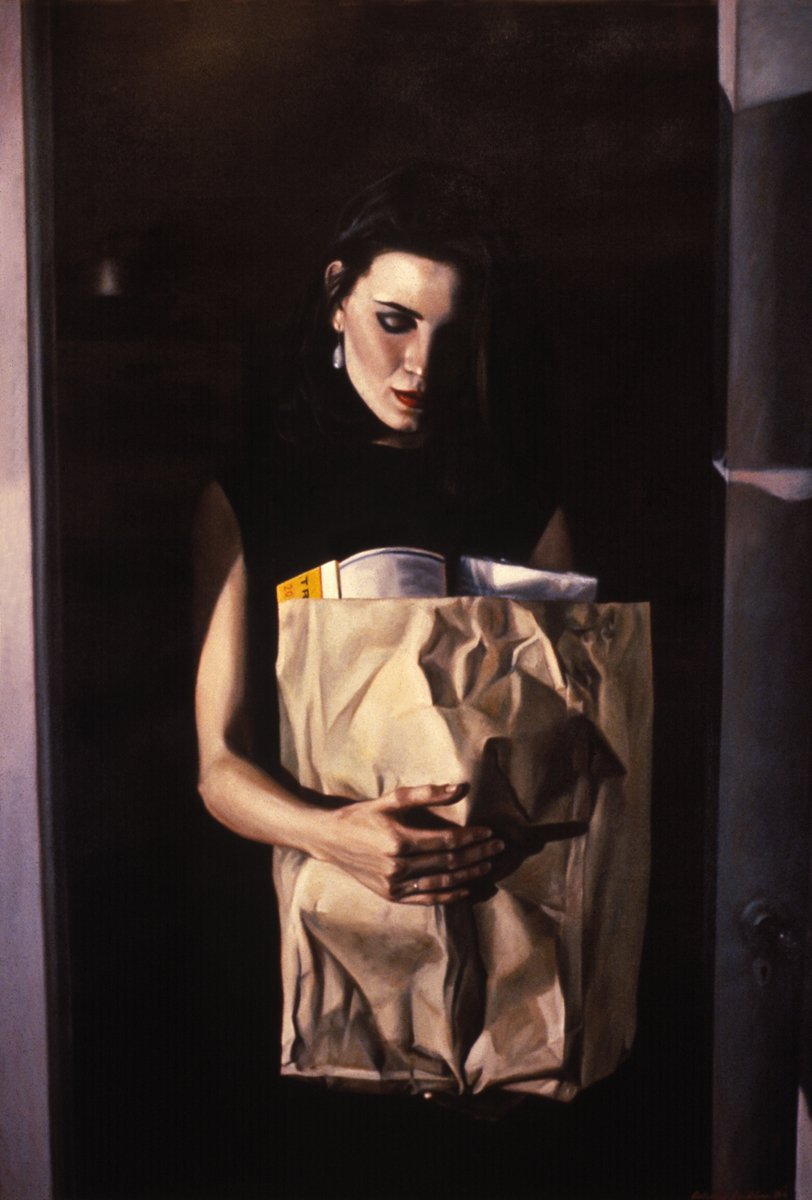
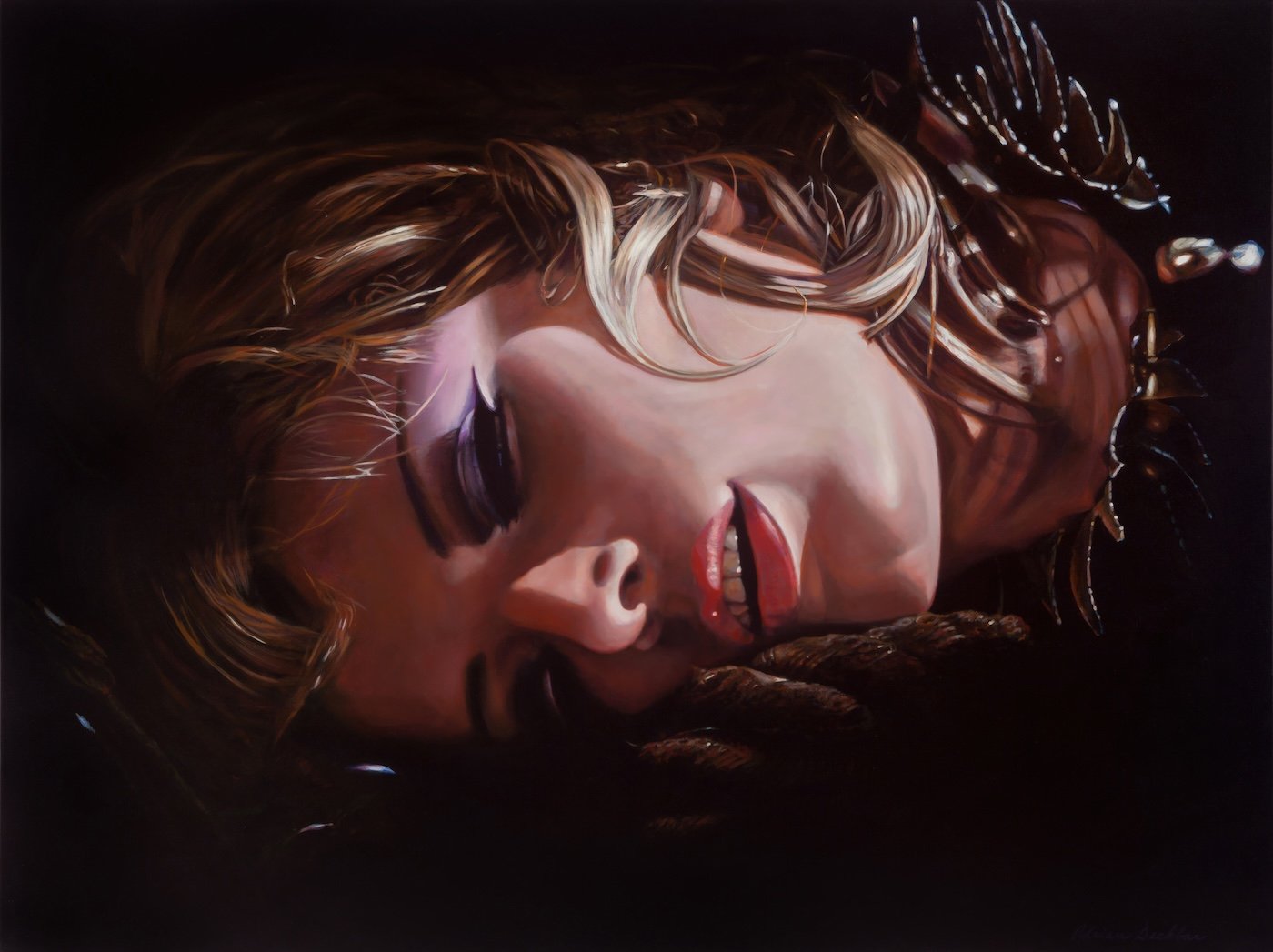
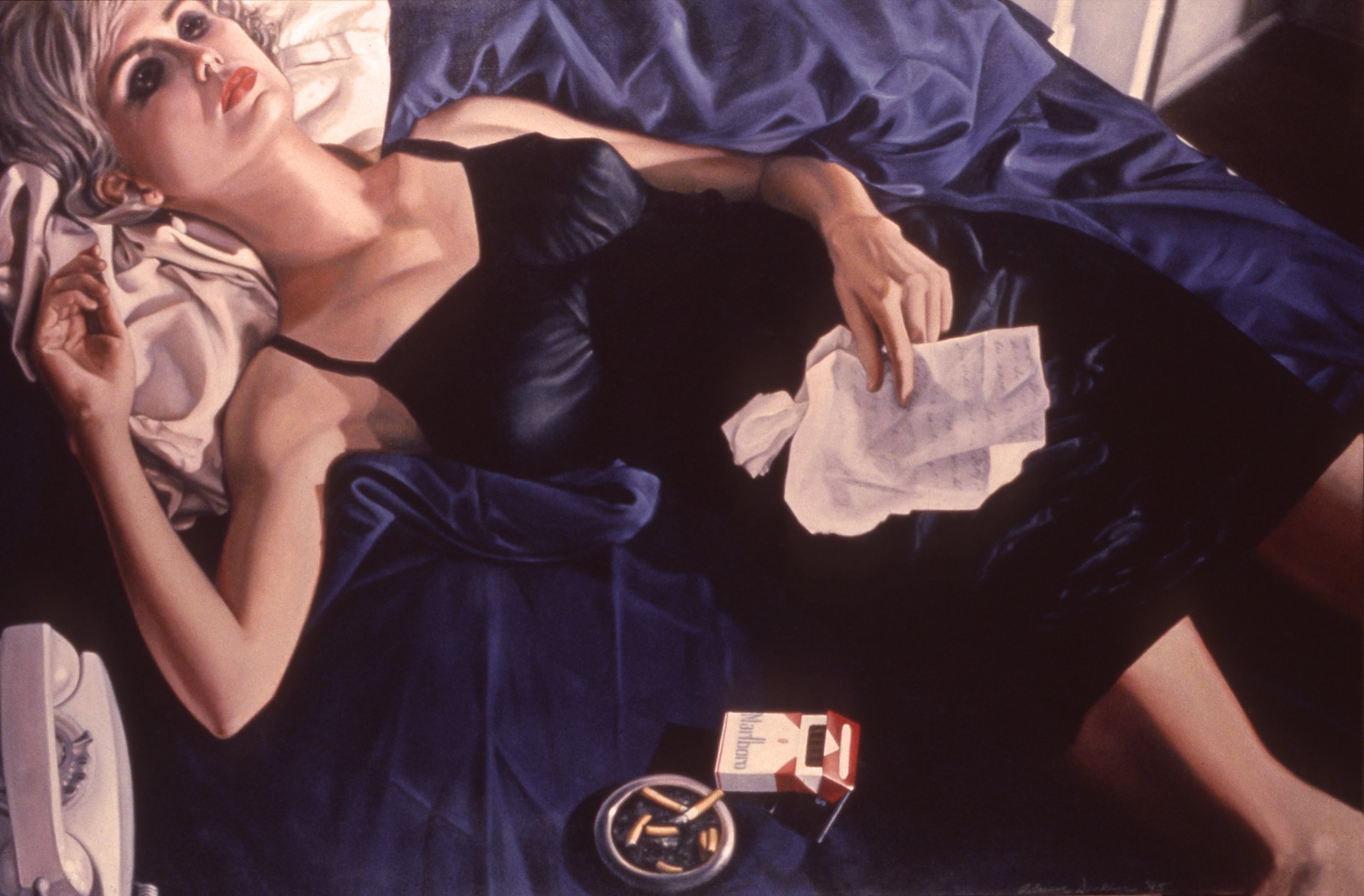
AAD: Do you still do much teaching?
AD: Teaching has helped me in numerous ways, and I consider myself a very good teacher. I really enjoy it and love to see people learn and grow. Getting away from solo studio time is imperative also. I listen to music and books at the easel, but human beings need social interaction. I have had numerous positions, filling in for a professor at Tulane on and off for years, teaching at the New Orleans Academy of Fine Arts for 10 years, teaching numerous workshops, and now teaching adults in small classes. My next workshop is "Problem Solving in Oil and Acrylic" offered in January and February of 2024 at Abbeyartworks in Covington, Louisiana.
AAD: Adrian, what can we expect next from you?
AD: I usually work in a series to develop and explore subject matter that intrigues me. I plan to now concentrate on rock paintings of the creek, continuing what I began with Flowing: In and Out. I may explore other formats and sizes, crop in tighter, bringing the interest to the forefront. I may change the underpainting color which affects the finished piece. All to be decided as I look at my projected digital images.
Currently, I have three paintings hanging at Justus Fine Art Gallery in Hot Springs. This is my first showing in Arkansas and I'm getting to know Hot Springs, and Dolores Justus, who is a gem and a wonderful artist as well. I think this is a terrific gallery, and I have had the good fortune to show in a number of really excellent spaces. My plans are to move here full time if I can pull my husband away from the city. I'm at the place now where I really enjoy the simple things in life. I adore the Ozarks for the tranquil privacy that they allow me to immerse myself in. My plans are to continue to live and work here as long as I am able to. So, yes, I really do "like the woods".


